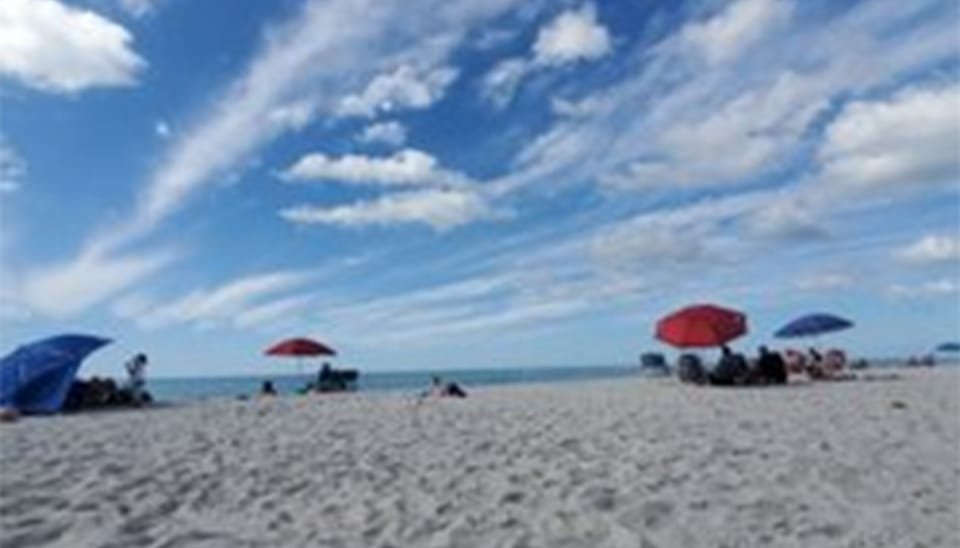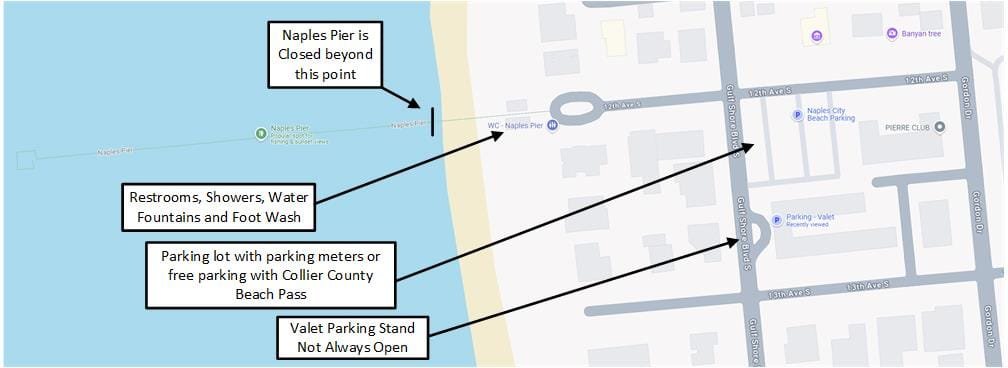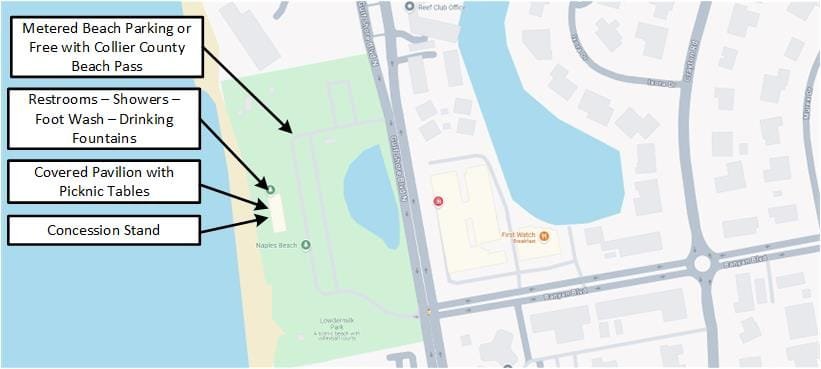Naples City
Major Beaches

General Information
The City of Naples boasts 40 access points along its beautiful Gulf shore beach line, providing ample opportunities for visitors to enjoy the pristine sands and turquoise waters. Among the most prominent locations maintained by the city are Naples Pier, a historic and scenic spot perfect for fishing and sunset views, and Lowdermilk Park, which offers family-friendly amenities such as picnic areas, a playground, and restrooms.
Naples Pier
Naples Pier is an iconic landmark with a rich history that dates back to 1888 when it was originally constructed to serve as a freight and passenger dock. Built by Walter N. Haldeman, founder of Naples, the pier played a pivotal role in the city’s early development, serving as the primary point of entry for goods and travelers arriving by boat. At the time, Naples was a remote and largely inaccessible area, and the pier provided a vital connection to the outside world. It quickly became a focal point for the small, growing community, embodying the spirit of a tranquil seaside escape.
Before Hurricane Ian, the Naples Pier extended 1,000 feet into the Gulf of Mexico, celebrated for its breathtaking sunsets, fishing opportunities, and frequent dolphin sightings. While the pier sustained significant damage, the City of Naples is committed to rebuilding this iconic landmark, restoring its status as a world-renowned attraction.
Though it no longer functions as a working dock, the Naples Pier remains a beloved destination for both tourists and residents. Once reopened, visitors can look forward to fishing off the pier’s end, enjoying refreshments at the concession stand, and marveling at the area’s stunning sunsets once again.

Lowdermilk Park
Lowdermilk Park, Naples’ only beachfront park, was dedicated in 1961. It was named after Fred Lowdermilk, Naples’ first city manager and city engineer, who served from 1949 to 1961. The park was established on land given to the city by The Naples Company as part of early development efforts in exchange for street variances and beach access adjustments. Early contributions included a pavilion, grills, and picnic tables, donated by benefactor Lester Norris, which helped make the park a central recreational space for the community
